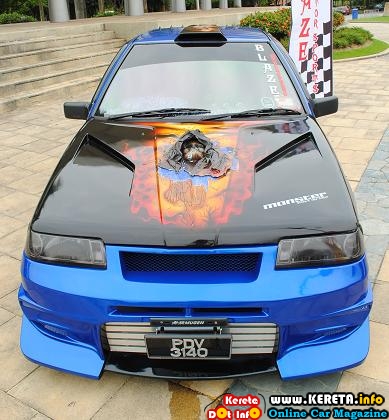|
|
|---|
Thursday, January 7, 2010
Lithium: General Motors builds first Volt battery pack on production line [w/video] TNR.v, CZX.v, WLC.v, LI.v, RM.v, LMR.v, CLQ.v, SQM, FMC, ROC,
Posted by andre at 2:58 PM"GM is working closely with suppliers to optimize the cost of all the pack's components and hopes to hit the U.S. Advanced Battery Consortium target of $300/kWh by 2015."
This is the most important message for us from this first step among many to bring Electric cars on the road. It means affordability and it means mass market for EVs - this is what we are waiting for with our Lithium and REE plays.
Lithium Juniors are breaking out of consolidation stage with news from Magna and GM Volt hitting the wires.
"We have discussed Lithium and REE investment opportunity with the Big Picture investment approach in our Macro View for Micro Caps. Now we would like to make a model of EV Value chain and analyse the investment potential of its different parts...
Here is our first investment bottleneck: 190,000,000 Market Cap of Top 5 Canadian Lithium exploration companies.
We do not provide an investment advise here, but you can find ideas for your DD on this blog.
Lithium and REE Investment Manifesto and Next Big Thing in action:San Francisco notes."
We do not provide an investment advise here, but you can find ideas for your DD on this blog.
Lithium and REE Investment Manifesto and Next Big Thing in action:San Francisco notes."
VoltAge Get Plugged In
Very good overview of GM Volt Lithium technology, safety, cost and market here from GM developers:
More Video on GM Volt from Autoline LIVE from GM's Battery Announcement
Autoblog:
"General Motors builds first Volt battery pack on production line [w/video]
It was exactly three years ago today that the original Chevrolet Volt concept rolled onto the stage at the 2007 Detroit Auto Show. Last summer, we visited a facility in Brownstown Township, MI that General Motors had chosen to manufacture battery packs for the production Chevrolet Volt. In the intervening five months, GM has been busy installing assembly equipment in the formerly empty building and today GM invited the media back to Brownstown to watch the first "official" pack roll down the assembly line.Starting today, the battery packs are full production-spec units, but GM engineers are still tweaking the management software in an attempt to maximize range and lifespan. Between now and November, the plant will be producing several hundred packs that will be used for a variety of development tasks. Some will be heading straight into the cyclers at the test lab in Warren, MI, while the the rest will be going into the pilot and production verification Volts that will begin rolling out of the Detroit Hamtramck assembly plant by April. More details after the jump.
Video
[Source: General Motors]
The 160,000 square-foot Brownstown plant currently has 25 employees assembling the packs, with that number set to grow as production ramps up. GM officials declined to say exactly what the capacity of the plant is right now, but the did espouse the plant's flexibility to add additional shifts and speed up the build rate. And judging by the amount of empty floor space, there's plenty of potential for expansion.The assembly process is broken down into three main areas, beginning with module pre-assembly where the cells are installed into one of the three modules that make up the pack. From there, the individual modules are installed into the main case. All the connection welding is done by automated equipment to ensure a high level of quality. Finally, in the pack main line, all the remaining systems are connected and the packs are tested. Testing includes both electrical and electronic integrity, as well as mechanical leak testing (the pack is liquid cooled). We had a chance to talk with GM's battery director Denise Grey about the current state of battery development. Packs and cells are still being tested around the clock at the Warren, MI battery lab. Over the Christmas holiday, the test cells were running in automatic mode, with only a skeleton crew dropping in to check on the units. The test equipment in the lab is able to automatically notify the engineers if anything unexpected happens. We asked Grey about the cost of the batteries considering this is one of the largest issues in making the Volt a profitable, big seller. Many estimates have put the cost of automotive lithium ion battery systems at up to $1,000/kWh. However, Grey echoed what program management VP Jon Laukner told us previously: The current cost of the Volt pack is much lower than that. While neither would be nailed down on specifics, they indicated that the cost was currently around $500-600/kWh, which puts the 16 kWh pack in the $8,000-9,500 range. Grey says that GM is working closely with suppliers to optimize the cost of all the pack's components and hopes to hit the U.S. Advanced Battery Consortium target of $300/kWh by 2015. Finally, we asked Grey and spokesman Rob Peterson about the comments made by Chairman/CEO Ed Whitacre the day before about launching the Volt earlier than November. At this stage of the program, it is extremely difficult to pull much of anything ahead. As development is completed over the next several months, a slew of safety and emissions certification testing must be completed, all of which takes time. Whitacre asked the team if they could pull the Volt launch up, but that's unlikely to happen any sooner than November 2010. At best, the car might arrive in some showrooms a few weeks earlier than planned, but don't count on the Volt arriving in the early fall. Nonetheless, Peterson emphasized that by the end of 2010, Chevrolet will have "well over 1,000 Volts" on the road, including the pilot build and production verification vehicles coming out this summer."
[Source: General Motors]
The 160,000 square-foot Brownstown plant currently has 25 employees assembling the packs, with that number set to grow as production ramps up. GM officials declined to say exactly what the capacity of the plant is right now, but the did espouse the plant's flexibility to add additional shifts and speed up the build rate. And judging by the amount of empty floor space, there's plenty of potential for expansion.The assembly process is broken down into three main areas, beginning with module pre-assembly where the cells are installed into one of the three modules that make up the pack. From there, the individual modules are installed into the main case. All the connection welding is done by automated equipment to ensure a high level of quality. Finally, in the pack main line, all the remaining systems are connected and the packs are tested. Testing includes both electrical and electronic integrity, as well as mechanical leak testing (the pack is liquid cooled). We had a chance to talk with GM's battery director Denise Grey about the current state of battery development. Packs and cells are still being tested around the clock at the Warren, MI battery lab. Over the Christmas holiday, the test cells were running in automatic mode, with only a skeleton crew dropping in to check on the units. The test equipment in the lab is able to automatically notify the engineers if anything unexpected happens. We asked Grey about the cost of the batteries considering this is one of the largest issues in making the Volt a profitable, big seller. Many estimates have put the cost of automotive lithium ion battery systems at up to $1,000/kWh. However, Grey echoed what program management VP Jon Laukner told us previously: The current cost of the Volt pack is much lower than that. While neither would be nailed down on specifics, they indicated that the cost was currently around $500-600/kWh, which puts the 16 kWh pack in the $8,000-9,500 range. Grey says that GM is working closely with suppliers to optimize the cost of all the pack's components and hopes to hit the U.S. Advanced Battery Consortium target of $300/kWh by 2015. Finally, we asked Grey and spokesman Rob Peterson about the comments made by Chairman/CEO Ed Whitacre the day before about launching the Volt earlier than November. At this stage of the program, it is extremely difficult to pull much of anything ahead. As development is completed over the next several months, a slew of safety and emissions certification testing must be completed, all of which takes time. Whitacre asked the team if they could pull the Volt launch up, but that's unlikely to happen any sooner than November 2010. At best, the car might arrive in some showrooms a few weeks earlier than planned, but don't count on the Volt arriving in the early fall. Nonetheless, Peterson emphasized that by the end of 2010, Chevrolet will have "well over 1,000 Volts" on the road, including the pilot build and production verification vehicles coming out this summer."
Subscribe to:
Post Comments (Atom)
















0 comments:
Post a Comment